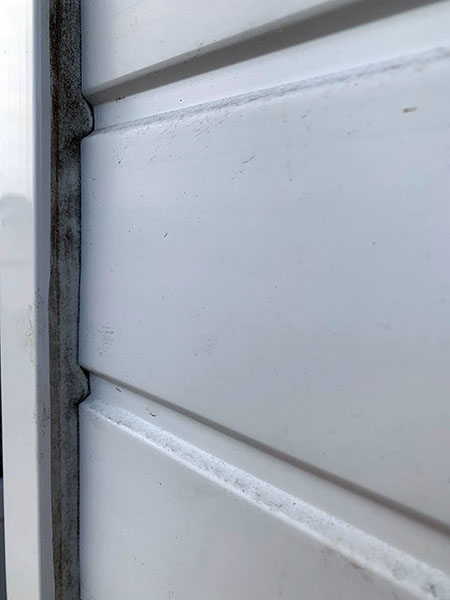How To Cover Ugly Gaps Around Windows or Doors
Using a uPVC architrave to seal over and cover ugly the gaps around windows or doors is an easy way to tidy them up, with just a small saw and a tube of acrylic sealer and an applicator gun. Avoid using silicone sealer to stick the trims, unless you are working in a bathroom or similar.


An ugly gap example
Trims which are going to be decorated up to, or where a wall is to be painted with an emulsion paint afterwards should always be adhered with acrylic sealers, and if the lead edge is to be over-sealed, then the over-seal should be carried out with acrylic sealer, because if you use a silicone seal, the paint will not stick to that surface. Trims fitted in bathrooms or wet areas, where the trim is directly fitted to a high gloss surface or onto tiles, then these trims should be sealed on the lead edge with silicone seal, this prevents the surface attracting mould growth. To start with, if you clean off the old debris and scrape the surface back to create a flat area to receive the uPVC cover trim is the first thing to do. Brush off and vac the debris. Starting with the top trim, then the base trim and finally the sides, cut all the trims to size first, and then lay each one flat on a worktop or similar (use a dust sheet to protect the surface), then carefully apply the acrylic sealer to the back of the trim, one at a time, keeping the sealer slightly back from the edge which will be seen, do this to avoid the sealer squeezing out from behind the trim when you place it onto the area you are working on. As you start to fit the trims, in the order you cut them, take a strip of Sellotape, ready to apply it once the top trim is in place (you may need an extra pair of hands for this) this will prevent the trim from coming away, once it is fitted. Apply all trims in the same order that you cut them, and once they are all in place, leave them to set overnight. The following day you can apply the final coat of either silicone or acrylic seal (depending on which environment you are working in, by cutting the nozzle of the sealer tube to a fine size (no more than 4-mm diameter, and apply the sealer to both the lead edge and also the joint against the item that the trim abuts up to. If you are not too confident with the sealer gun for this application, we suggest that you could apply a mastic tape to the wall or tiles etc. to give you a line to work to. Once the sealer has been applied and you have smoothed it off with either a plastic tool or your finger, then you should remove the tape immediately, and perhaps re-smooth the edges once more. The list of products you would need are below: I hope this information is helpful for you.




